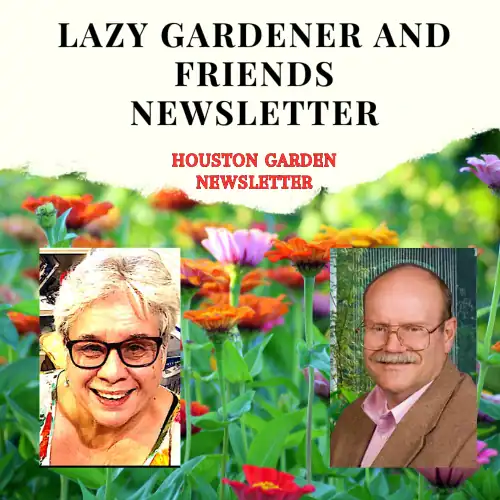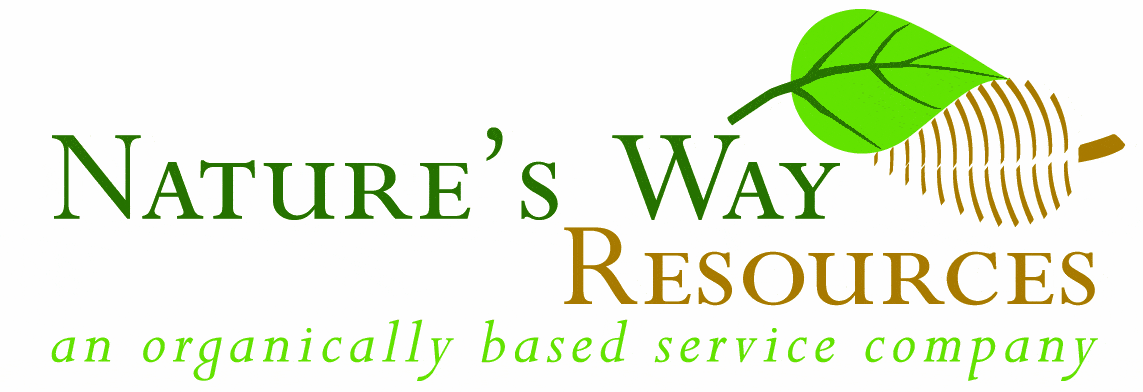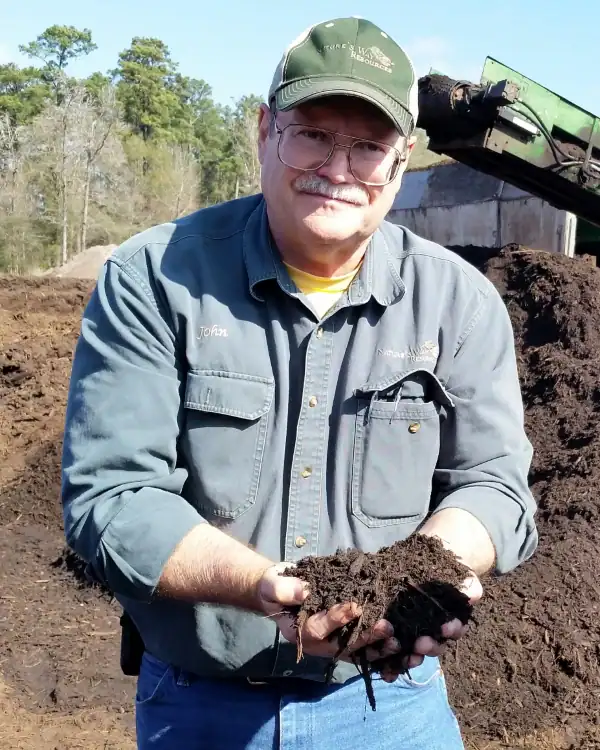
Nature’s Way Resources is proud to produce & email you this free weekly newsletter. We have no ads, but sponsors do graciously help support this project as a public service. Please note their names below & show your gratitude for this free service by patronizing their businesses! To become a sponsor, call (936) 273-1200
Nature’s Way Resources owner John Ferguson, “The Lazy Gardener” Brenda Beust Smith, and Shelby Cassano welcome your feedback and are so grateful to the many horticulturists who contribute their expertise

A Ruby-throated Hummingbird stopping to feed on nectar from a Red-Cardinal plant — perfect picture to get you excited about the upcoming Xtreme Hummingbird Xtravaganza! (Michael Gray photo, see article below)
KEEP EYE ON OFT-ERRATIC HURRICANES THAT SUDDENLY EXPLODE IN GULF!
BY BRENDA BEUST SMITH (aka The Lazy Gardener)
IT’S OFFICIALLY WORLDWIDE HUMMINGBIRD AWARENESS TIME. Both the World’s International and our National HUMMINGBIRD DAYS started Saturday. Wondering why your gardens aren’t already attracting (one of) Nature’s most-delightful wonders?
Don’t take their absence personally. Migrating hummers are on their way here, and we have many here year-round. But even migraters might end up staying if they find good food and nesting sites.
Chances are, however, most will continue southward by late October or early November. Ruby-throated hummingbirds are the most common species in our area, and they typically migrate south by mid-October or later, depending when temperatures start their somewhat unpredictable migration to winter grounds in Mexico or Central America.
If you’re gardening (even in part) to attract birds, mark your calendar: Houston Audubon Society’s annual BIRDWEEK starts Sat., Sept. 20. Numerous events are planned to help you learn more. So, plenty of time to make your yard more inviting! Most important: don’t miss the Sept.13 & Sept. 20, 2025, Xtreme Hummingbird Xtravaganza at the Gulf Coast Bird Observatory, 299 Hwy. 332 W in Lake Jackson.
In our Spotlight Article below, KAYLA PRINGLE, Gulf Coast Bird Observatory Education Assistant, gives us great advice in her Spotlight Article article below to help you to get started or expand your garden’s guest list (including hummers). First: here’s a Hummingbird Garden design* with more plants than you will probably have room use to help get you started.
(*from my Lazy Gardener’s Guide — PDF version, free. Text request to lazygardenerbrenda@gmail.com).

BEFORE WE GET TO KAYLA’S GREAT HUMMER TIPS, DIANN L. has a query: “Our gorgeous Rising Sun Redbud is very healthy and happy except it started putting on red buds along the stems. What the heck?! Wrong season unless I missed a lot of the year. Any idea what’s up?”

What’s “normal” is for this wonderful tree’s pink/reddish-purple to bloom before the leaves appear in Spring. But Mother Nature marches to her own drummer, registers subtle weather changes (we probably couldn’t even if we wanted to) and adjusts her babes’ growth patterns in safest way for them to proceed! We’ve had strange weather lately (to put it mildly) causing many plants to deviate from norms. Since you can’t do anything about it, just sit back, enjoy, and hope you get repeat delights in spring. Let us know if you do!
WHATEVER YOU DO, always double-check online or with local experts any significant “cost to you!” AI gardening advice. So frustrating when these “sources lump us in with, say, El Paso, Tyler, or Brownwood. If you’ve been here anytime at all, you know how different our respective weather can be! Following inappropriate advice can = dead plants. AI’s one-answer-for-all may be fine for other areas, but not us.
* * *

WANT HUMMERS? CREATE A GARDEN
THAT TRULY SERVES THEIR NEEDS!
by KAYLA PRINGLE
Education Assistant
Gulf Coast Bird Observatory
More than just colorful visitors, hummingbirds serve as vital pollinators when gardens are designed with their needs in mind. To create a garden that truly serves their needs, think beyond generic nectar plants. Flower structure matters: tubular blooms such as Gulf Coast Penstemon (Penstemon tenuis), Turk’s Cap (Malvaviscus arboreus), and Trumpet Honeysuckle (Lonicera sempervirens) align perfectly with a hummingbird’s long bill and tongue. Stagger bloom times across early, mid, and late seasons to ensure uninterrupted nectar availability throughout migration.
Feeders remain an excellent supplement but require upkeep and cleaning. Use a simple solution of four parts water to one-part sugar. Do not use any honey, sweeteners, or dyes, and clean every 2–3 days to prevent mold or fermentation. It’s best to position feeders in shade to slow spoilage and offer multiple feeders to reduce territorial disputes.
With how small hummingbirds are, protein is often overlooked; hummingbirds rely on small insects and spiders for essential nutrients. Avoid systemic insecticides like neonicotinoids, which can contaminate nectar, and instead encourage insect populations with native shrubs and leaf litter.
Finally, design your hummingbird microhabitat with safety and shelter in mind. Dense shrubs near feeding areas provide perches and protection from predators, while minimizing window reflections helps prevent collisions. By combining thoughtful plant selection, responsible feeding, and a habitat that supports the entire food web, gardeners can ensure hummingbirds not only visit, but flourish season after season.
* * *
EDITOR’S NOTE: FOR MORE GREAT TIPS, drop by the Sept. 13 & 20 Xtreme Hummingbird Xtravaganza, 8am-noon. nature booths, native plant sale, kids activities, etc. Gulf Coast Bird Observatory, 299 Highway 332, W. Lake Jackson, TX . $5 Children 12 & under free.
* * *

Fall: Most Productive Season for
Growing Vegetables in Greater Houston
by ANGELA CHANDLER
The Garden Fall gardening stands out as the most productive season in the Houston area because it offers some unique advantages not available in our other seasons, things like milder temperatures, more consistent moisture, reduced plant stress and lower pest & disease pressure. But one of the most distinct advantages is the variety of food crops that will grow over this season.
Houston’s summer heat can be sweltering. The “feels like” temperature is often much higher than the thermometer indicates. This is hard on our gardens, for certain, but it is also very hard on gardeners. The difference between daytime highs and evening lows can be quite small, giving plants little relief, even at night. These extremes stress plants, stunting growth and causing premature bolting. The milder temperatures and cooler evenings alleviate these stresses and encourage steadier, healthier growth.
Many common pests thrive in the heat & humidity of summer. Their threat diminishes as temperatures drop. Fungal diseases become less prevalent, lowering the need for frequent chemical intervention. Fall often brings more frequent rain, but even without rain, there is less evaporation after irrigation. The soil remains warm enough for germination of many seeds but is not baked as we often find during the summer.
One of the best things about fall gardening here is that with timing and a little good luck we can often get in a second crop of some favorite warm season crops like squash, cucumbers, and beans. At the same time, we can start the first planting of our cool season crops like cabbage, broccoli, spinach, and greens of all kinds. These are best started indoors starting in mid-August for planting out in September. Root crops soon follow, and we can often harvest something every week from now through spring.
Fall tomatoes are an all-time favorite with many Houston area gardeners and our local nurseries respond with a healthy variety to choose from. We often harvest tomatoes all the way to Christmas by keeping some row cover on hand for the few really cold nights.
* * *

ATTN. GARDEN/PLANT GROUPS
— Nature’s Way Resources offers free guided tours of NWR’s extensive nursery/soil/mulch facilities for garden clubs, plant societies and other plant-oriented, organized groups. As usual, NWR’s now-expanded meeting site is free to above groups. Reservations a must for both. Great time to visit.

Submitting a Calendar Event?
For best chance of getting it in next upcoming newsletter, submit in exact requested format (see top of calendar below. Reformatting by us may = delay in publication)
* * *
John’s Corner
NEWS FROM THE WONDERFUL WORLD OF SOIL AND PLANTS
#345
Subject: Mid Quality Mulches – Part 2
Many mulches can be useful or bad depending on how they are used. Also, many different types of mulches are called by the same “common name”.
Cedar Mulches
Many users around the state report that they have had good results with cedar mulches, while others report extreme failures and problems. This is because there are a lot of variations in the types of cedar mulch one finds in the garden centers. A couple patterns that have been observed are mulches made from species with the common name of “Junipers“ (Juniperus ashei, Juniperus deppeana, etc.) versus species commonly called “Cedars“ such as the Eastern Red Cedar (Juniperus virginiana), Southern Red Cedar (Juniperus silicicola), and Western Red Cedar (Thuja plicata). The first group tends to grow on alkaline calcareous soils, while the second group is often found growing on more acidic soils. Most reports of the cedar mulches made from “Junipers” have been positive, and most reports of cedar mulches made from “Cedars” have been negative. Juniper mulch is primarily decomposed by fungus species that produce weak organic acids that help make nutrients available in alkaline soils.
The claim to fame for cedar mulch one often hears is that it repels insects. While this is true, it also repels butterflies and beneficial insects. This effect only happens with fresh ground cedar. After a few weeks, the oils evaporate or break down, and one is left with raw wood that has a very high carbon: nitrogen ratio that robs nitrogen from your plants. This is why one often sees yellowing on plants when cedar is used as a mulch. Used in this manner, it becomes a poor choice.
A second issue with using Cedar mulches is the type of processing they have had. This could be fresh ground cedar from land clearing operations to de-oiled cedar flakes from industry. When de-oiled cedar flakes from industry are used, they can weigh as little as 190 lbs./cy since they have been cooked at temperatures of 225°F or more to remove the oils and have almost zero moisture when they leave the mill. The low weight is good for bagging, handling, and shipping purposes. After cooking, the cedar flakes can absorb water after application and weigh over 1,600 lbs./cy wet. De-oiled flakes are very low in nutrients and may cause nitrogen deficiencies in the soil and other mineral tie-up problems, as it has a very high carbon:nitrogen ratio, often over 500:1 (remember healthy soil is only 30:1).
Western Red Cedar (Thuja plicata) is very rot-resistant. While this characteristic makes it good for lumber, the chemicals, such as resins and oils, which act as preservatives, are not good for plants. These chemicals resist attacks by insects and microorganisms (e.g. fungi), hence also render the wood toxic for soil or composting microorganisms.
Note: Cedar from younger trees has less of these chemicals than older trees, which contain more heartwood and have accumulated more of these compounds.
Note: Reports are showing that cedar mulch is toxic to chickens and other bird species and should not be used as a bedding material.
Note: One good use for fresh ground cedar mulch is on the floor in greenhouse production. There, the oils repel pest insects and reduce the need for pesticides.
Redwood Mulches
Redwood mulches are available in this area in two forms, bark (shredded or nuggets) and shredded wood. Redwood mulches became popular since they are slow to decompose, lasting 6-7 years in some cases, they are naturally fire resistant, and the shredded wood has a natural reddish color. Redwood also has natural insect-repelling and rot-resistant qualities, and it resists termite and ant infestations and lasts longer than other wood mulches
Redwood mulches come from 3 genera, which are: Sequoia and Sequoiadendron of California and Oregon in the United States, and Metasequoia from China. These are very tall trees that have lived for thousands of years; however, they have become endangered due to logging, habitat destruction, and air pollution.
Barks and uncomposted sawdust from redwood, cedar, Douglas fir, larch, eucalyptus, and spruce trees are considered toxic to many plants. Any bark that is high in tannic acids and phenols is potentially harmful unless thoroughly composted and leached.
In addition to the natural chemicals, like all mulch that is improperly handled, redwood mulch sometimes contains toxic substances that can also kill plants. This usually occurs when large piles of mulch sit in landscaping yards and don’t get oxygen. To avoid this problem, buy mulch that has been allowed to weather and air out. Smell the mulch before you buy it. If it has a foul odor like vinegar or silage, buy a different product or lay it out on a concrete surface for a few days before you put it in your garden. Once the odor goes away, the mulch is safe to use.
Like all bark and wood mulches, it has a very high C:N ratio. It does not cause as many nitrogen tie-up problems as other mulch types since it is slow to decompose. Like all single species of mulches, it does not support as wide a diversity of beneficial microbes as other types of mulches. Also, the same chemicals that make it slow to decompose kill a lot of the good microbes that plants need.
It is not a sustainable product, and its usage leads to habitat destruction. There is also a cost in transporting redwood mulch from the Pacific coast to our area, and the transportation generates a lot of unnecessary carbon dioxide emissions. The bottom line is that it is very expensive and is not a good choice for Houston and the Gulf Coast.
A positive use of redwood mulch may be in a decorative bed where only a thin layer is used.
Click below to learn more about all of the different types of mulch in detail.
Explore our article library to learn more information about various mulches and other topics.
Sponsorship
If you are interested in becoming a sponsor, please contact us at 936-273-1200 or send an e-mail to: lazygardenerandfriends@gmail.com
About Us
BRENDA BEUST SMITH
WE KNOW HER BEST AS THE LAZY GARDENER . . .
but Brenda Beust Smith is also:
- a national award-winning writer & editor
- a nationally-published writer & photographer
- a national horticultural speaker
- a former Houston Chronicle reporter
When the Chronicle discontinued Brenda’s 45-year-old Lazy Gardener” print column — started in the early ’70s as a fun side-project to reporting, it then ranked as the longestrunning, continuously-published local newspaper column in the Greater Houston area. The name, she says, is not just fun, it’s true.
Brenda’s gradual sideways step from reporter into gardening writing led first to an 18-year series of when-to-do-what Lazy Gardener Calendars, then to her Lazy Gardener’s Guide book which morphed into her Lazy Gardener’s Guide on CD, which she now emails free upon request.
Brenda became a Harris County Master Gardener and, over the years, served on theboards of many Greater Houston area horticulture organizations. She hosted local radio and TV shows, most notably a 10+-year Lazy Gardener specialty shows on HoustonPBS (Ch. 8) and her call-in “EcoGardening” show on KPFT-FM.
For over three decades, Brenda served as Assistant Production Manager of the GARDEN CLUB OF AMERICA’S “BULLETIN” magazine. Although still an active broad-based freelance writer, Brenda’s main focus now is THE LAZY GARDENER & FRIENDS HOUSTON GARDEN NEWSLETTER with John Ferguson and Pablo Hernandez of Nature’s Way Resources.
A native of New Orleans and graduate of St. Agnes Academy and the University of Houston, Brenda lives in Humble, TX, and is married to the retired Aldine High School Coach Bill Smith. They have one son, Blake.
Regarding this newsletter, Brenda is the lead writer, originator of it and the daily inspiration for it. We so appreciate the way she has made gardening such a fun way to celebrate life together for such a long time.
About her column, Brenda says: “I don’t consider myself a ‘garden writer.” I started out 50+ years ago as a very lazy “gardening reporter.” I still feel that way today. I hope my columns inspire/help newcomers, but I do not write to them. I write to very experienced gardeners who want to expand their horizons.
JOHN FERGUSON
John is a native Houstonian and has over 35 years of business experience. He owns Nature’s Way Resources, a composting company that specializes in high quality compost, mulch, and soil mixes. He holds a MS degree in Physics and Geology and is a licensed Soil Scientist in Texas.
John has won many awards in horticulture and environmental issues. For years he represented the composting industry on the Houston-Galveston Area Council for solid waste. His personal garden has been featured in several horticultural books and “Better Homes and Gardens” magazine. His business has been recognized in the Wall Street Journal for the quality and value of their products. He is a member of the Physics Honor Society and many other professional societies. John is the co-author of the book Organic Management for the Professional.
For this newsletter, John contributes articles regularly and is responsible for publishing it.
PABLO HERNANDEZ Pablo Hernandez is the special projects coordinator for Nature’s Way Resources. His realm of responsibilities include: serving as a webmaster, IT support, technical problem solving/troubleshooting, metrics management and quality control. Pablo helps this newsletter happen from a technical support standpoint.
Download the Newsletter with Our Events Calendar Below!

NATURE’S WAY RESOURCES
101 Sherbrook Cir.
Conroe, TX 77385
Hours of Operation
Monday – Friday: 8AM to 5PM
Saturday: 8AM to 2PM
Copyright © 2024 Nature’s Way Resources | All rights reserved.



